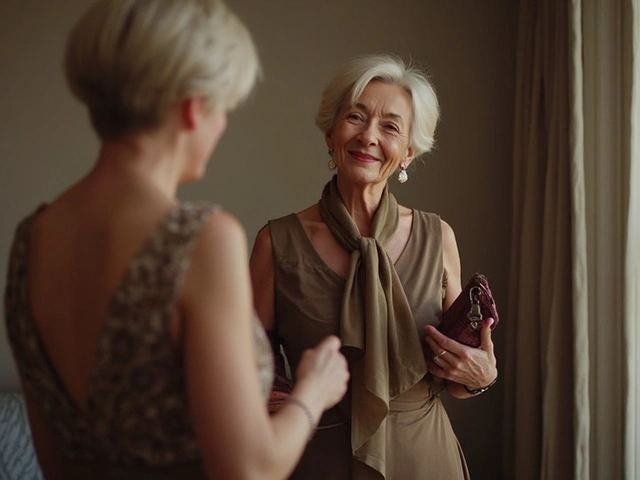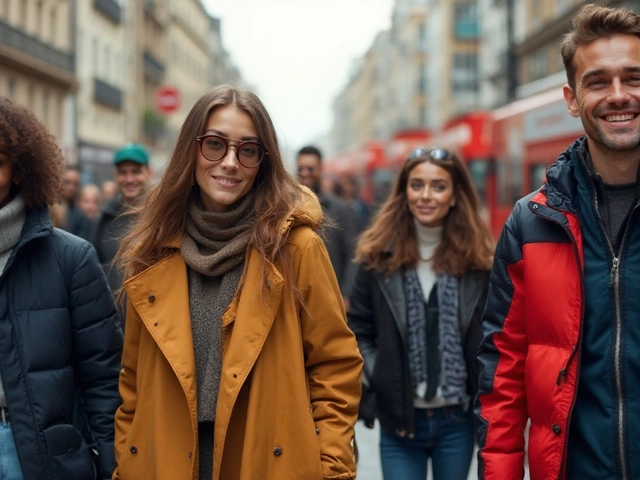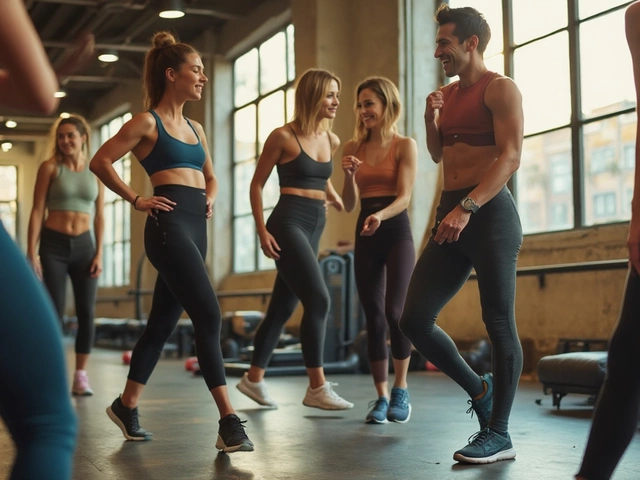Evening Dress Codes: What You Really Need to Know
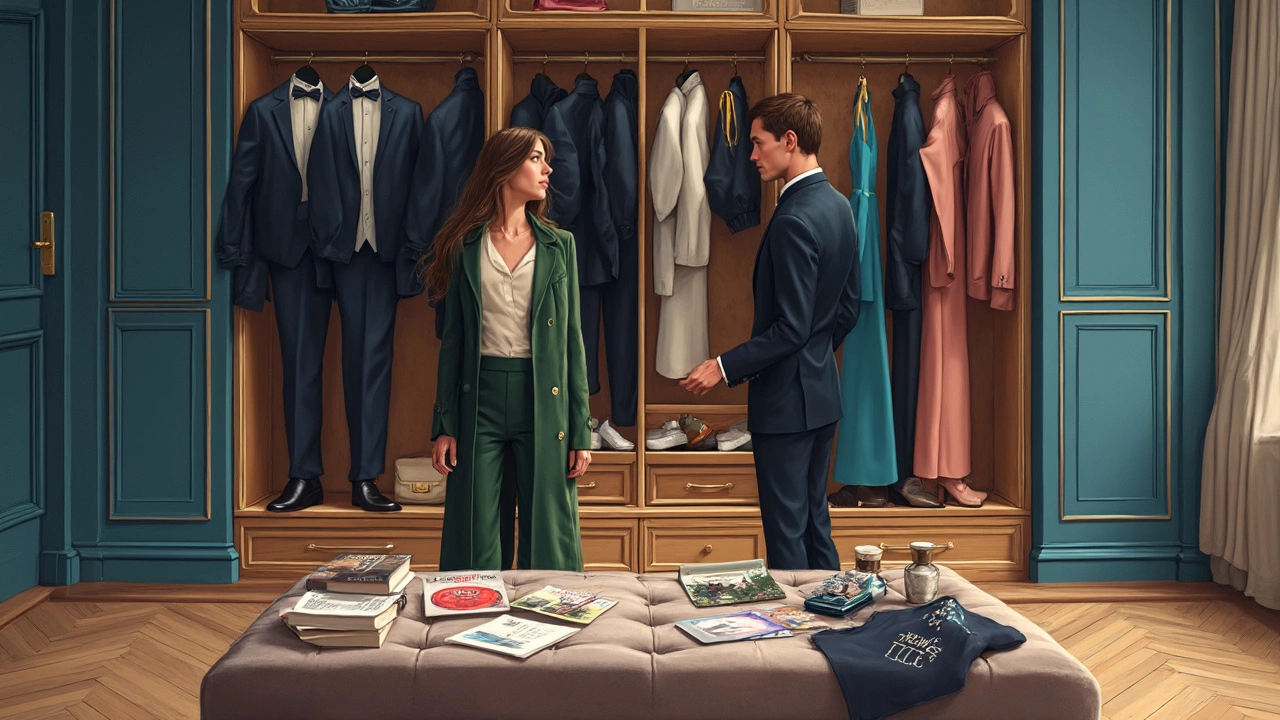
- Cleo Fairchild
- 17 May 2025
- 0 Comments
Ever gotten an event invite that says “black tie optional” or “cocktail attire” and just stared at it, hoping for a hint? You’re absolutely not alone. Dress codes can get weirdly vague, and sometimes they feel like they’re written just to make you second-guess everything in your closet.
The trick is that these terms do mean something—usually, they’re your secret clue about how fancy you should go, which dress actually counts as “formal,” and when you really need to break out the heels (or not). If you’ve ever wondered when a little black dress might be too casual, or if that sequin number is a bit too much, this guide is about to clear things up. No more awkward entrances or hiding in the bathroom because you dressed for the wrong decade. Let’s spell out what these evening dress codes actually look like in real life, so you’ll feel confident—and comfortable—every time you RSVP.
- Why Dress Codes Matter
- Decoding Common Evening Dress Codes
- Black Tie: What Actually Works
- Cocktail Attire Demystified
- Creative and Themed Dress Codes
- Tips to Nail Your Evening Look
Why Dress Codes Matter
Dress codes aren’t just about looking good for photos—they actually make events work better. If you’ve ever shown up feeling totally overdressed or painfully casual, you know how awkward it can be. Dress codes give everyone a common set of expectations so you fit in, not stand out for the wrong reasons.
Here’s what people don’t always realize: when an invitation sets a specific dress code, it shapes how the whole night feels. There’s a big difference between a room full of sparkly floor-length gowns and one with people in casual sundresses. Matching the vibe helps you blend in and interact more easily.
Sticking to the requested dress code can also be seen as a sign of respect to your host. Nobody wants their big night to feel too laid-back because guests skipped the suggested attire. Data from a 2023 event planning survey shows that 82% of hosts say dress codes help their party feel special and organized. See below:
| Survey Year | Hosts Preferring Dress Codes |
|---|---|
| 2021 | 78% |
| 2022 | 80% |
| 2023 | 82% |
On top of that, an established evening dress code can actually save you from stress. It narrows down your options, so you don’t spend hours trying on everything in your closet. No one enjoys panic-shopping for a last-minute event. When you know what’s expected—like “black tie” means a long gown and heels, “cocktail” leans more flirty and knee-length—you pick faster and with more confidence.
Think of it as your backstage pass to the party: dress codes tell you what’s in, what’s out, and how to show up as your best self without worrying what other people might think.
Decoding Common Evening Dress Codes
Ever looked at the phrase “formal attire” and wondered what it really means in practice? Welcome to the confusing world of evening dress code rules. They cover everything from the super traditional to the casual-but-not-too-casual, and the trick is figuring out the vibe of each one.
The biggest ones you’ll see on invitations are:
- Black Tie: Think floor-length dresses or a chic, dressy jumpsuit. If you’re wearing a suit, it should be a tux. Heels or elegant flats are fair game, but sneakers are a hard no.
- Cocktail Attire: This is less stuffy, but still stylish. Knee-length or tea-length dresses, jumpsuits, or even a matching set. You can play with colors and patterns a bit more here.
- Semi-Formal: Somewhere between business and fun. Midi dresses, a nice blouse with a skirt, or tailored pants. Imagine what you’d wear to a work party where the boss cares about appearances.
- Formal/Black Tie Optional: You can wear a cocktail dress, long evening gown, or well-fitted pantsuit. It’s about looking sharp but with options.
- Festive: This one usually pops up around the holidays—expect some sparkle. Sequins, bold colors, or fun accessories are totally encouraged here.
If you’re still unsure of the differences, here’s a quick cheat sheet comparing some of the typical dress codes you’ll run into:
| Dress Code | Dress Length | Suggested Shoes | Common Add-ons |
|---|---|---|---|
| Black Tie | Full-length | Heels or formal flats | Clutch, jewelry |
| Cocktail | Knee/tea-length | Heels, dressy sandals | Statement earrings |
| Semi-Formal | Midi/tea/knee-length | Pumps/flats | Belt, small bag |
| Festive | Any length | Heels/flats | Sparkly details |
Don’t overthink it. If an invite leaves you stumped, you can always ask the host. Odds are, half the people on the guest list are wondering the same thing. When in doubt, being a little more dressed up is always safer than showing up too casual.
Black Tie: What Actually Works
If an invite says black tie, it’s code for “bring out the fancy stuff.” But what does that actually mean for your outfit? For women, black tie doesn’t always mean you have to wear a floor-length ball gown, though that’s definitely the classic option. Cocktail-length dresses are okay if they’re super polished—think luxe fabrics like silk, crepe, or velvet, and something that looks intentional, not like you’re just coming from the office.
The classic rule: go for a dress that’s at least tea-length (hits mid-calf) or full-length. Sequins, beading, and other fun embellishments are totally fair game if you want to look glam. Just skip anything that shows too much skin—a high slit or spaghetti straps are fine, but save cutouts, plunging necklines, and mini dresses for another night. Gloves, clutches, and statement earrings can level up your whole vibe in a second.
Shoes matter. You’ll want a pair of heels or dressy flats—avoid anything too casual like sandals or boots. For outerwear, leave the puffy jacket at home and bring a nicer wrap, shawl, or structured coat.
- Stick to rich colors like black, navy, jewel tones, and metallics—they always look sophisticated in the evening.
- Fabric choice is key: silk, satin, velvet, and tulle are all solid picks.
- Make sure whatever you wear is comfortable enough to sit, stand, and dance.
Here’s a quick look at what works for evening dress codes with black tie:
| Dress Type | OK for Black Tie? | Bonus Points |
|---|---|---|
| Floor-length gown | Yes | Classic choice |
| Tea-length dress | Yes | Elegant and practical |
| Dressy cocktail dress | Sometimes | Choose luxe fabric |
| Little black dress | Rarely | Only if styled up |
| Pantsuit (formal fabric) | Yes | Chic and modern |
Fun fact: A major survey by Rent the Runway found that around 65% of people picking a black tie dress choose dark colors or metallics, and most end up wearing something full-length even if it isn’t strictly required.
Main takeaway: You’ve got leeway, but aim for pretty formal. If in doubt, it’s way better to be overdressed than feel underdressed all night.
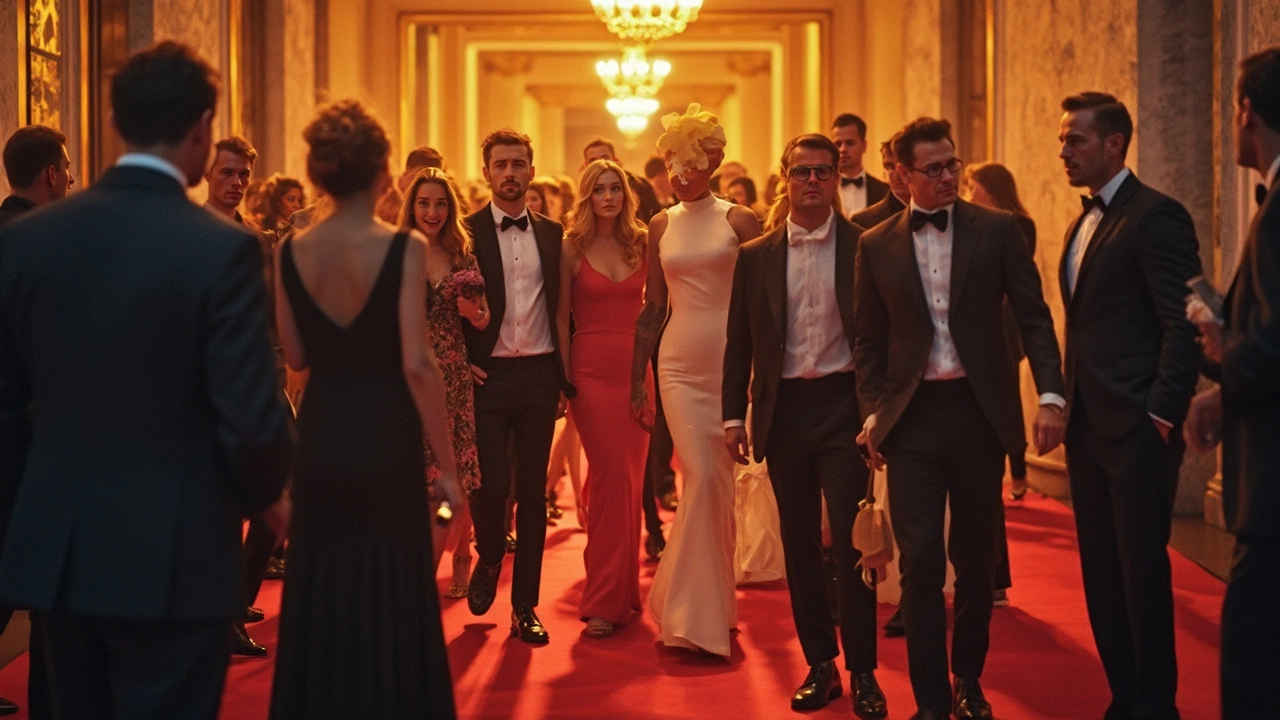
Cocktail Attire Demystified
If there’s one dress code that causes total confusion, it’s “cocktail attire.” It pops up on wedding invites, holiday parties, and swanky birthday dinners—but hardly anyone knows the rules. The good news: this dress code sits right between business casual and full-on formal, giving you lots of room to look polished without needing a ballgown.
So, what’s expected? Picture a dress that’s swish enough for a party but not dramatic enough for a red carpet. Classic cocktail dresses usually hit just above or below the knee, but midi styles are totally in, and nobody’s checking your measuring tape. Jumpsuits in luxe fabrics like silk or crepe work too, especially if you want to stand out without wearing a skirt.
- Stick to bolder colors, fun patterns, or a little sparkle. Cocktail parties welcome both neutrals and pops of red, emerald, or navy.
- Keep it comfy but not too relaxed. Tees, denim, or sneakers are a definite no, but you don’t need a tiara either.
- Add simple accessories—a clutch and some statement earrings will go further than a complicated necklace stack.
- For shoes, go for heels or fancy flats, whichever you’ll actually wear all night.
You might be wondering if you’ll be underdressed or overdressed. The trick is to aim for effort without looking stiff. When in doubt, a plain black dress (think Audrey Hepburn) can be styled up or down with jewelry and shoes. According to a 2024 survey by Rent the Runway, almost 65% of women said the “little black dress” is their go-to for evening dress code events, especially cocktail parties.
| Fabric | Best Evening Colors |
|---|---|
| Satin | Emerald, Navy, Burgundy |
| Cotton-blend | Black, Pale Blue, Rose |
| Crepe | Red, Plum, Ivory |
| Lace | Black, Silver, Champagne |
If the invite says "cocktail attire," they’re hoping for a look that’s festive and smart, not stiff or rigid. Remember: showing up confident always beats picking the trendiest dress in the room.
Creative and Themed Dress Codes
If you get an invite with a “creative black tie,” “white party,” or something like “Roaring Twenties Glam,” don’t panic—it’s not a trick. These themed dress codes are actually your green light to have a little fun, as long as you stick to the main vibe of the night. The organizer usually wants everyone in the mood, so you fit in by leaning into the theme without pushing it overboard.
Here’s how to crack the code on the most popular creative and themed evening dress invitations:
- Creative Black Tie: This means you should start with the basics—elegant dress, heels, maybe a clutch—but you get to play with colors, statement jewelry, or even a bold pattern. No need to stick to plain black or traditional evening dresses.
- Cocktail with a Twist: If the invite says “cocktail attire with a pop of color” or “jewel-toned,” you still wear cocktail-length dresses, but skip the all-black and add that wow with, say, emerald green or sapphire blue.
- Era-inspired: Think “Great Gatsby Party.” Retro looks are a hit, but keep it modern with vintage-inspired fringe, sequins, or art deco jewelry. Comfort matters too—don’t squeeze into a flapper dress that feels more costume than chic.
- Seasonal Themes: “Winter Wonderland” or “Spring Fling” give you a hint to the color palette—silver, icy blue, or pastels. Material can matter here, too—velvet in winter, chiffon in spring.
One thing people forget: Always double-check the invitation or event page for specifics. If the dress code is super-specific, sometimes the host gives examples or even a Pinterest board link. Take that as gospel. And if you’re stuck, a quick text to the host can clear up a lot.
People love these dress codes because they break up the same-old, same-old routine. According to a 2024 event trends report from PartySlate, about 35% of formal events last year in the US featured a creative or themed dress code. That’s up from 20% in 2020, so you’ll see this trend more and more.
| Theme Type | What Works | What to Avoid |
|---|---|---|
| Creative Black Tie | Chic dress, bright accessories | Too-casual fabrics (jersey, denim) |
| Era-Inspired | Retro cuts, bold jewelry | Full-on costumes |
| White Party | All-white, classic lines | Beige, cream, or off-white |
So the next time a wild theme pops up on your invite, don’t stress. Grab something that fits the idea, keep it appropriate, and you’ll turn heads for the right reasons. And just so you remember, the most important part of any evening dress code is feeling comfortable and confident in what you wear. Everything else is just details!
Tips to Nail Your Evening Look
When you crack the code for evening dress codes, getting your outfit right gets so much easier—but it’s the little choices that can actually bump your look up a notch. Here’s how to look the part and feel great from head to toe, no matter the occasion.
- Plan for comfort. Start with how long you’ll be at the event. If you’ll be on your feet for hours, killer heels probably aren’t worth the misery. Block heels or dressy flats can look just as put-together, especially since nearly 60% of women say comfort matters more than style after their twenties (according to a 2023 YouGov poll).
- Pay attention to fit. Tailored dresses or well-fitted jumpsuits always land better than something you’re constantly tugging at. About 80% of women feel more confident in outfits that fit well rather than those that just follow trends.
- Think about fabric. For most evening events, fabrics like silk, satin, crepe, or velvet instantly make an outfit look occasion-ready. If you’re going to be somewhere warm, breathable options like lightweight crepe are the real MVP.
- Don’t skip the details. Dress codes are guidelines, but it’s the details—statement earrings, a sleek clutch, or a bold lipstick—that personalize your look. Studies show people remember unique accessories and styling touches way more than they remember the exact dress.
- Test your outfit before the big night. Try sitting, walking, and dancing around in your dress and shoes. If anything feels off, tweak it now so you’re not distracted at the party.
| Dress Code | Common Fabrics | Typical Shoes | Must-Have Accessory |
|---|---|---|---|
| Black Tie | Silk, Satin, Velvet | Heels, Dressy Flats | Clutch Bag |
| Cocktail | Cotton Blend, Lace | Heels, Block Heels | Statement Jewelry |
| Semi-Formal | Crepe, Chiffon | Dressy Flats | Subtle Earrings |
One last tip—a little bit of prep makes a massive difference. Double-check the weather, set out everything the night before, and if you’re dressing up, steam or iron your outfit so it’s crisp. If you want to play it extra safe, snap a mirror selfie to see how your look comes across on camera. You’ll never get caught off-guard by a surprise photo again.
